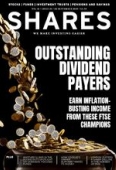Archived article
Please note that tax, investment, pension and ISA rules can change and the information and any views contained in this article may now be inaccurate.
‘I need help with annual allowance calculations’

When calculating the net income for the tapered annual allowance, do we have to add capital gains and dividends from an ISA given that they are not taxable?
Sotirios
Tom Selby, AJ Bell Senior Analyst says:
The tapered annual allowance is one of three pensions annual allowances that exist in the UK. The rules are quite complicated so it’s worth a quick reminder of how it all works.
The tapered annual allowance is intended to only apply to higher earners, progressively reducing the annual allowance from £40,000 to just £10,000.
Whether or not you trigger the tapered annual allowance depends on two income measures: adjusted income and threshold income.
If someone’s adjusted income is above £150,000 and their threshold income above £110,000, then the taper kicks in, with their annual allowance reduced by £1 for every £2 of adjusted income they earn.
For those with an adjusted income of £210,000 or more and a threshold income of £110,000 or more, the annual allowance is £10,000.
What counts as adjusted income?
Adjusted income includes all taxable income – including from any investments not held in tax-free wrappers like ISAs and SIPPs, and things like bonuses and buy-to-let earnings – plus employer pension contributions made during the tax year. Any lump sum death benefits that are liable to tax will also be deducted to reach the final figure.
So any non-taxable income, including income generated through ISA investments, won’t be counted.
Because employer contributions are included in the measure (your personal pension contributions are deducted), you can’t use salary sacrifice arrangements – whereby salary or bonuses are swapped for pension contributions to lower your taxable income – to reduce your adjusted income.
What counts as threshold income?
If your adjusted income is above £150,000, you might still not be affected by the taper – and thus be able to continue saving up to £40,000 into a pension each year tax-free – if your threshold income is below £110,000.
Threshold income includes your net taxable income (that is total taxable income less any personal pension contributions entitled to tax relief at source) plus any salary sacrifice arrangements set up from 9 July 2015.
As with adjusted income, taxable lump sum death benefits are deducted to reach the final figure. Any non-taxable income from investments held in vehicles such as ISAs won’t be included.
As I often say at the end of these columns, this isn’t straightforward and if you get it wrong the cost could be significant. If you are in any doubt about how the taper works or the options available, you should speak to a regulated financial adviser.
DO YOU HAVE A QUESTION ON RETIREMENT ISSUES?
Send an email to editorial@sharesmagazine.co.uk with the words ‘Retirement question’ in the subject line. We’ll do our best to respond in a future edition of Shares.
Please note, we only provide guidance and we do not provide financial advice. If you’re unsure please consult a suitably qualified financial adviser. We cannot comment on individual investment portfolios.
Important information:
These articles are provided by Shares magazine which is published by AJ Bell Media, a part of AJ Bell. Shares is not written by AJ Bell.
Shares is provided for your general information and use and is not a personal recommendation to invest. It is not intended to be relied upon by you in making or not making any investment decisions. The investments referred to in these articles will not be suitable for all investors. If in doubt please seek appropriate independent financial advice.
Investors acting on the information in these articles do so at their own risk and AJ Bell Media and its staff do not accept liability for losses suffered by investors as a result of their investment decisions.

 magazine
magazine








